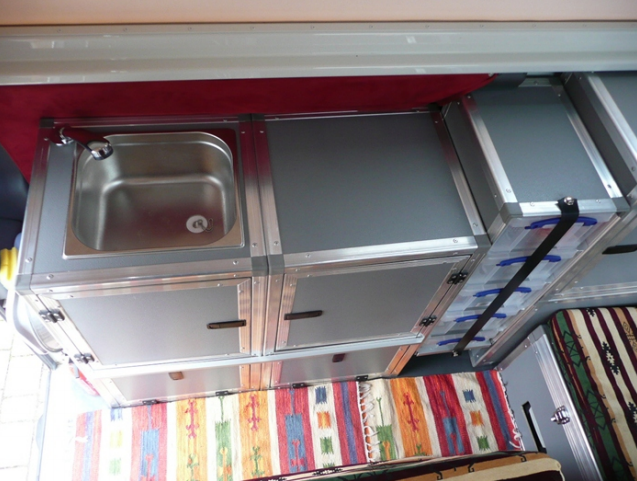... what cabinet materials, construction and mounting methods/techniques, joints, and hardware do you all recommend to withstand the rigors of offroad work.
.
Plywood cases offer excellent strength to weight ratios...
Plywood offers unequalled flexibility of design options...Flats, curves, angles with endless combinations possible...
Plywood can be finished with unlimited surface coverings ...Paint, veneers, metals, plastics, etc...
Plywood is relatively inexpensive, available everywhere and works with simple tools...
Fiberglass and epoxy expand the design options to include curved casework and doors / drawers... You can have style with function...
The construction method that I feel is strongest is building the cases with "box joints"... A simple way, exceedingly strong and not too time consuming after you build a calibrated joint cutting jig... Put them together with epoxy and coat the cases with a thinned out coat of epoxy to seal the wood... Use them in a boat if you wish... Same with the drawers...
Roll up tambour doors are a style worth considering for their security and stay-closed design... Bonus points for looking good too...
Cabinet backs should be rabbetted, glued and stapled or screwed to the case...
Attaching the cases to the vehicle is dependent on the backing material... Screws and bolt combinations rarely fail...
Hardware for drawers: Accuride A3832 with the 'hold close' option...Double them up for extreme conditions...
Hinges for cabinet doors: Stainless steel piano hinges...
Latches for doors are dependent on door design... No one, is best... I like to build wood slide-bolts into extreme condition vehicles to supplement the 'hold-close" drawer guides...Silent, more than strong enough and stylish...
"T-nuts" and bolts with washers work the best to attach cabinets together and to fasten drawer hardware to the cabinet cases... Thread lock them if you love overkill...
Finally, custom can be affordable if the fabricator is fast, creative and having a good time...!!!...
I hope that helps...

